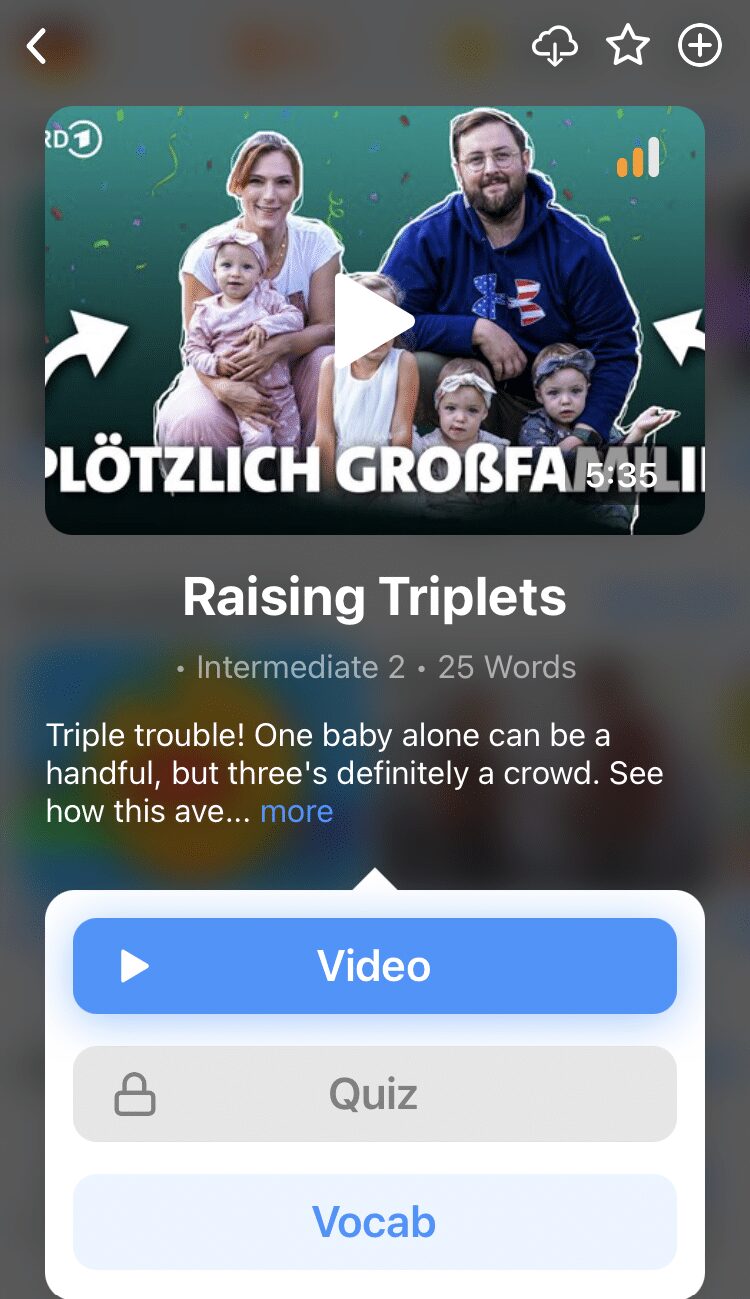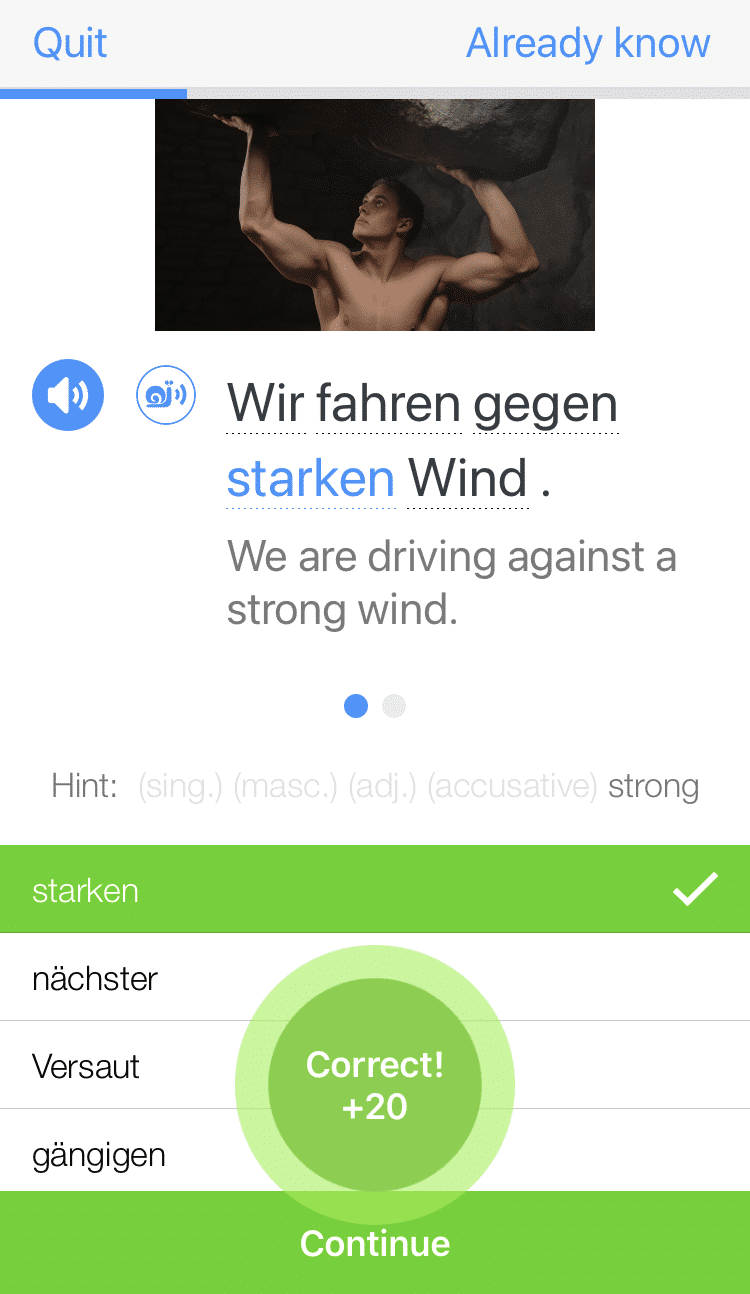6 German Grammar Rules for Beginners

It’s important to see grammar as the nuts and bolts of any language. It may not sound as exciting as watching German movies or reading interesting novels, but it’s exactly those types of works that you’ll be able to fully appreciate and adore once you nail the rules.
To get beginners up and running, here are six German grammar rules that are worth learning, as well as some key similarities and differences between English and German, so that you can start to build your confidence in understanding and forming German sentences.
Download: This blog post is available as a convenient and portable PDF that you can take anywhere. Click here to get a copy. (Download)
1. A Noun’s Gender Determines Its Definite Article
One of the main differences between English and German is noun genders. In German, nouns are either masculine, feminine or neutral. In addition, their definite and indefinite articles (the, a/an) depend on their case.
Cases affect nouns, and their case changes if they are the object, subject or indirect object in a sentence. Depending on the noun’s gender and sentence case, we might need to change their definite or indefinite article. You can see how genders and cases affect articles in this really useful table.
Here are five examples of this in action:
Der Hund ist braun. (The dog is brown.)
As Hund is a masculine noun and the subject of this sentence, it has to take der (the).
Ich sehe den Hund. (I see the dog.)
In this instance, the dog is the object of the sentence. This means it’s in the accusative case, so der changes to den.
Ich kaufe dem Hund das Essen. (I buy the dog the food.)
Here, the dog is in the dative case as it’s now the indefinite object. Therefore der becomes dem.
Ich kaufe das Essen des Hunds. (I buy the food of the dog.)
The genitive case is used to show possession so, as the food belongs to the dog in the above sentence, we use the genitive masculine definite article, des. More often than not, nouns after des usually add an -s or –es to the end, which is why Hund has turned into Hunds.
Den Mann beißt der Hund. (The dog bites the man.)
At first glance, you might think the above sentence would translate as “the man bites the dog.” However, we should know that it’s the other way around. The German case system shows us the difference between who or what is acting and who or what is acted upon. (In English, which has no case system, word order is more important because we don’t have these cues.)
Take a look at the sentence again. Masculine nouns take den when they are in the accusative case, so that means the man must be the one being bit. Confusing? You’re telling me! But, trust me, with time you’ll start to pick this up.
One tip I have for getting the hang of this is to actually see it in use. But content created for learners can be slow and unnatural, so I recommend using authentic German videos. If you struggle to keep up with German media, FluentU could be a good option for you.
FluentU takes authentic videos—like music videos, movie trailers, news and inspiring talks—and turns them into personalized language learning lessons.
You can try FluentU for free for 2 weeks. Check out the website or download the iOS app or Android app.
P.S. Click here to take advantage of our current sale! (Expires at the end of this month.)
2. Adjective Endings Must Agree with a Noun’s Gender and Case
Not only do genders and cases dictate definite articles, but they also dictate the ending of any preceding adjectives. Again, just like with definite and indefinite articles, there are loads of handy tables to help you figure out which ending you need to use.
Here are five examples to show you adjective endings when the adjective is preceded by a definite article:
Der schwarze Hund hat Hunger. (The black dog is hungry.)
As dog is masculine and in the nominative case we need to add an -e to the end of schwarz (black) when it follows a definite article.
Ich habe einen schwarzen Hund gefunden. (I found a black dog.)
In the above sentence, the dog is the object—meaning it’s now in the accusative case—and follows the indefinite article, so takes an -en ending.
Das Essen des alten Hunds ist hier. (The old dog’s food is here.)
Genitive masculine nouns require their adjectives to end in -en.
Ich gebe dem alten Hund das Essen. (I am giving the food to the old dog.)
As the dog is the indefinite object in this sentence, it takes the dative case so alt (old) ends in -en.
Heißer Tee schmeckt gut. (Hot tea is tasty.)
If there is no definite article before the noun, the adjective ending still changes. In this case, tea is masculine so heiß (hot) takes an -er ending. Typically, when an adjective is not preceded by a definite or indefinite article that already shows the gender and case, the adjective makes up for this lack.
For example, in der heiße Tee (the hot tee), der already shows us that the noun is masculine and thus the adjective only takes –e. However, if we say heißer Tee (hot tee), the adjective takes -er because there is no definite article that already tells us the noun is masculine. This general rule applies to adjective endings for case, number and gender.
3. Verbs (Usually) Come Second in a Sentence
German verbs are stubborn things. They’re not budging from their second position in a sentence. But, of course, as with most things German, there are exceptions to the second position rule. The following sentences explain where your verbs need to go:
Ich sehe den Hund. (I see the dog.)
This shows the classic verb placement. In all main clauses the verb—in this case sehen (to see)—takes second place after the subject.
Ich sehe den Hund und ich gebe ihm das Essen. (I see the dog and give him the food.)
Here we have two clauses joined together by und (and). But that doesn’t change the placement of the two clauses’ verbs. In both cases, they come second after the subject.
Ich gebe dem Hund das Essen, weil er Hunger hat. (I give the dog the food because he is hungry.)
This sentence is made up of two clauses, just like the above example, however the verb in the second one is right at the end. The reason for this is that the final part of the sentence is a subordinate clause.
The main rule of thumb with subordinate clauses is conjunction first, verb last. Simply put, weil (because) is one of a few verbs which will always send the following verb to the end of the clause.
Weil ich ein Haustier wollte, kaufte ich einen Hund. (Because I wanted a pet, I bought a dog.)
In this sentence, the whole “verb second” rule is blown right out of the water. It starts off with a subordinate clause so, as explained above, the weil sends the verb to the end of the clause.
Then we have what is known as the “verb comma verb” rule. After a verb and comma, we need the verb from the next clause straight away. So in the above example, our verb comma verb is wollte, kaufte (wanted, bought).
Ich habe einen Hund gekauft. (I bought a dog.)
For the German present perfect tense you will need a form of haben or sein as well as a past participle. The form of haben or sein goes in second position, as in all basic sentences. But, the past participle is sent to the end of the sentence.
4. Plurals Are Formed in Various Ways
In English, virtually all plurals are formed by adding an “s” to the end of the original word. In German, instead of an -s, plurals are formed in various ways.
One fairly common way is by adding an -e. However, just like in English, there are plenty of exceptions to this rule (just think of “fish” and “sheep” in English). Below are five quick examples of the most common plural forms in German:
A) der Hund (dog) → die Hunde (dogs)
It’s also important to note that all plural nouns take die as their definite article.
B) die Banane (the banana) → die Bananen (bananas)
If a word already ends in -e, then the plural usually just involves adding an –n.
C) das Auto (the car) → die Autos (cars)
Any nouns which come from foreign words will form their plural by adding an -s.
D) der Mann (the man) → die Männer (men)
Some plurals are formed by adding an umlaut as well as a new ending. In this case Mann becomes Männer.
E) der Vater (the father) → die Väter (fathers)
Many nouns that end in -el or -er create their plural by adding an umlaut. So Vater becomes Väter.
Another crazy thing to watch out for is that plural forms in German can change according to their case! For example, in the dative case Väter would become Vätern.
5. “You” Is Either Formal or Informal
There are two different forms of “you” in German. If you’re speaking to a relative, friend or child, you will use the informal du form. If you’re speaking or writing to someone who you don’t know, or to a colleague at work, you will use Sie, the formal form of “you.”
Ich liebe dich. (I love you.)
Dich is the informal accusative form of du.
Geben Sie mir bitte das Essen. (Please give me the food.)
Sie is the formal “you.”
Haben Sie schon gegessen? (Have you already eaten?)
Remember that Sie always needs a capital letter when it means “you.”
Wie geht es Ihnen? (How are you?)
In the dative case Sie becomes Ihnen, which also needs to be capitalized.
Ich hab’s dir gegeben. (I gave it to you.)
For the dative informal you, we need to use dir.
6. There is No Progressive Tense
The sentences “I eat” and “I am eating” are the same in German:
You may think that’s confusing. After all, if someone says Ich esse Fisch , do they mean “I eat fish” or “I am eating fish”? But in reality, you can basically always figure out the speaker’s meaning from context.
For example, if you’re going into the cafeteria and your friend says Heute esse ich Fisch , then he or she added the heute (“today”), which shows that it’s just a one-time thing, not a frequent action.
Likewise, if someone who’s invited you to dinner asks you, Isst du Fisch? then you can be sure that they’re asking if you generally eat fish, since they’re probably considering serving fish.
This whole issue can actually cause problems and confusion for German speakers who are learning English, but since that’s not you, we’ll let them worry about it.
So there we have the basics of five main German grammar rules. It may seem quite difficult at first, but the more you persevere, the easier it becomes. Just remember the German saying Übung macht den Meister, practice makes perfect! (Literally: Practice makes the master.)
Download: This blog post is available as a convenient and portable PDF that you can take anywhere. Click here to get a copy. (Download)
And One More Thing...
Want to know the key to learning German effectively?
It's using the right content and tools, like FluentU has to offer! Browse hundreds of videos, take endless quizzes and master the German language faster than you've ever imagine!
Watching a fun video, but having trouble understanding it? FluentU brings native videos within reach with interactive subtitles.
You can tap on any word to look it up instantly. Every definition has examples that have been written to help you understand how the word is used. If you see an interesting word you don't know, you can add it to a vocabulary list.
And FluentU isn't just for watching videos. It's a complete platform for learning. It's designed to effectively teach you all the vocabulary from any video. Swipe left or right to see more examples of the word you're on.
The best part is that FluentU keeps track of the vocabulary that you're learning, and gives you extra practice with difficult words. It'll even remind you when it’s time to review what you’ve learned.
Start using the FluentU website on your computer or tablet or, better yet, download the FluentU app from the iTunes or Google Play store. Click here to take advantage of our current sale! (Expires at the end of this month.)












